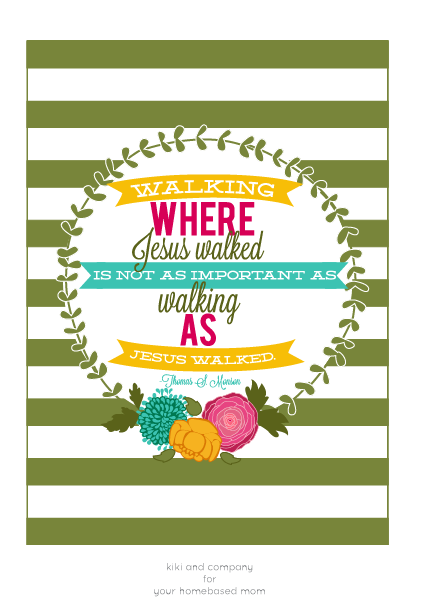Post # 221 -- Remember Your Face Mask When You Leave Home -- as long as COVID 19 is a threat
Dear Family and Friend
I have been thinking about our country trying to return back to some sense
of normality. It concerns me that i see fewer and fewer people wearing
face masks.
I checked on the CDC website on the 26th of May and again on
the 27th of May.only to find that in ONE DAY’s time there were 770 more
deaths and 16,429 new cases of COVID 19 - in ONLY ONE DAY!!!
Don't you think that lives -- OUR LIVES -- are worth the effort a few minutes that it takes to put on your mask.???
Just because we are allowed back out into our community doesn't mean that we should not continue to take preventative measures.
I mean that I hope and I pray that I don't catch it. Because of my cancer, my immune system is already compromised.
And I certainly hope and pray that you and your family members and friends don't catch this horrible virus.
I believe that it is helpful to be informed as well as prepared as much as we can. This is why o have been sharing this information with you
periodically:)
Use of Cloth Face Coverings to Help Slow the Spread
of COVID-19
Your cloth face covering may protect them. Their cloth face covering may
protect you.
About Cloth Face Coverings
A cloth face covering may not protect the wearer, but it may keep the
wearer from spreading the virus to others.
droplets produced when an infected person coughs, sneezes, or talks.
These droplets can land in the mouths or noses of people who are
infection control report that these droplets usually travel around 6 feet
(about two arms lengths).
Wear Cloth Face Coverings
stores, pharmacies, and gas stations.
- Cloth face coverings may slow the spread of the virus
- and help people who may have the virus and do not know it
- from transmitting it to others.Cloth face coverings can be
- made from household items.
While people who are sick or know that they have COVID-19 should isolate
at home, COVID-19 can be spread by people who do not have symptoms
and do not know that they are infected. That’s why it’s important for
other people) and wear cloth face coverings in public settings. Cloth face
coverings provide an extra layer to help prevent the respiratory droplets
from traveling in the air and onto other people.
If you do not have or like the regular medical masks you can make your own from
a bandana or even your favorite shirt:) you can find instructions to make your own
You can also find a pdf about how to wear your mask properly here: https://www.cdc.gov/coronavirus/2019-ncov/downloads/cloth-face-covering.pdf
 How to Wash Cloth Face Coverings
How to Wash Cloth Face Coverings
Cloth face coverings are an additional step to help slow the spread of COVID-19
settings.
Cloth face coverings should be washed after each use. It is important to always
a used face covering.
 How to Clean
How to Clean
Washing Machine
- You can include your face covering with your regular laundry.
- Use regular laundry detergent and the warmest appropriate water setting
- for the cloth used to make the face covering.
Washing by Hand
- Prepare a bleach solution by mixing:
- 5 tablespoons (1/3rd cup) household bleach per gallon of room
- temperature water or
- 4 teaspoons household bleach per quart of room temperature water
- may not be suitable for disinfection. Ensure the bleach product is not past
- its expiration date. Never mix household bleach with ammonia or any other
- cleanser.
- Soak the face covering in the bleach solution for 5 minutes.
- Rinse thoroughly with cool or room temperature water.
Make sure to completely dry cloth face covering after washing.
 How to Dry
How to Dry
Dryer
- Use the highest heat setting and leave in the dryer until completely dry
Air Dry
- Lay flat and allow to completely dry. If possible, place the cloth face
- covering in direct sunlight.
I am very claustrophobic and I do not care to wear the masks either, but
I also do not want to pass it around if I should happen to get COVID 19.:(
I do not like to wear masks at all!!! I feel like i can not breathe!!! I feel
like I have got to have some fresh air!!! If I can manage to wear them, I
think just about anyone can. So please wear your masks.
I am required to wear them for all of my appointments.
This month I had
one each day -- Monday through Thursday, three weeks out of four. This
requirement protects all those who enter the clinic, right? The CDC says the following about just how to protect yourselves:
 How to Protect Yourself & Others
How to Protect Yourself & Others
Older adults and people who have severe underlying medical conditions like heart or lung disease or diabetes seem to be at higher risk for developing serious complications from
Know how it spreads
- There is currently no vaccine to prevent coronavirus disease 2019 (COVID-19).
- The best way to prevent illness is
- to avoid being exposed to this virus.
- The virus is thought to spread
- Between people who are in close contact with one another
- (within about 6 feet).
- Through respiratory droplets produced when an infected person coughs,
- sneezes or talks.
- These droplets can land in the mouths or noses of people who are nearby
- or possibly be inhaled into the lungs.
- Some recent studies have suggested that COVID-19 may be spread by
- people who are not showing symptoms.
- ***Everyone Should***
- Wash your hands often

- Wash your hands often with soap and water for at least 20 seconds especially
- after you have been in a public place, or after blowing your nose, coughing, or
- sneezing.
- least 60% alcohol. Cover all surfaces
- of your hands and rub them together until they feel dry.
- Avoid touching your eyes, nose, and mouth with unwashed hands.
- Avoid close contact
- Avoid close contact with people who
- are sick, even inside your home. If possible,
- maintain 6 feet between the person
- who is sick and other household members.
- Put distance between yourself and other people outside of your home.
- Remember that some people without symptoms may be able to spread the virus.
- Do not gather in groups.
- Keeping distance from others is especially important for people who are
- Cover your mouth and nose with a cloth face cover when around others
- You could spread COVID-19 to others even if you do not feel sick.
- for example to the grocery store or to pick up other necessities.
- be placed on young children
- under age
- 2, anyone who has trouble breathing, or is unconscious, incapacitated
- or otherwise unable to remove
- the mask without assistance.
- The cloth face cover is meant to protect other people in case you are infected.
- Do NOT use a facemask meant for a healthcare worker.
- Continue to keep about 6 feet between yourself and others.
- The cloth face cover is not a substitute for social distancing.
- Cover coughs and sneezes
- If you are in a private setting and do not have on your cloth face covering,
- remember to always cover your mouth and nose with a tissue when you cough
- Throw used tissues in the trash.
- Immediately wash your hands with
- soap and water for at least 20 seconds. If soap and water are not readily available, clean your hands with a
- hand sanitizer that contains at least 60% alcohol.
- Clean and disinfect
- doorknobs, light switches, countertops, handles, desks, phones, keyboards,
- toilets, faucets, and sinks.
- If surfaces are dirty, clean them. Use detergent or soap and water prior to
- disinfection.
- household disinfectants will work.
- Monitor Your Health
- Be alert for symptoms. Watch for
- Especially important if you are
- running essential errands, going
- into the office or workplace, and in settings where it may be difficult to
- Take your temperature if symptoms develop.
- Don’t take your temperature within
- 30 minutes of exercising or after
- taking medications that could lower
- your temperature, like acetaminophen.
- Cleaning And Disinfecting Your Home

Everyday Steps and Extra Steps When Someone Is Sick
How to clean and disinfect
Clean
- Wear reusable or disposable gloves for routine cleaning and disinfection.
- Clean surfaces using soap and water, then use disinfectant.
- Cleaning with soap and water reduces number of germs, dirt and impurities
- on the surface. Disinfecting kills germs on surfaces.
- include:
- Tables, doorknobs, light switches, countertops, handles, desks, phones,
- keyboards, toilets, faucets, sinks, etc.]
- Disinfect
- Recommend use of EPA-registered household disinfectant
- .
Follow the instructions on the label to ensure safe and effective use of the - safely and effectively.
Many products recommend: - Keeping surface wet for a period of time (see product label)
- Precautions such as wearing gloves and making sure you have good
- ventilation during use of the product
- Wear skin protection and consider eye protection for potential splash
- hazards
- Ensure adequate ventilation
- Use no more than the amount recommended on the label
- Use water at room temperature for dilution (unless stated otherwise on
- the label)
- Avoid mixing chemical products
- Label diluted cleaning solutions
- Store and use chemicals out of the reach of children and pets
- You should never eat, drink, breathe or inject these products into your body or apply directly to our skin as they can cause serious harm. Do not wipe or bathe pets with these products or any other products that are not approved for animal use.
See EPA’s 6 steps
- Diluted household bleach solutions may also be used if appropriate for the
- past its expiration date. Some bleaches, such as those designed for safe
- use on colored clothing or for whitening, may not be suitable for disinfection.
- Unexpired household bleach will be effective against coronaviruses
- when properly diluted.
- Follow manufacturer’s instructions for application and proper ventilation.
- Never mix household bleach with ammonia or any other cleanser.
- Leave solution on the surface for at least 1 minute.
- To make a bleach solution, mix:
- 5 tablespoons (1/3rd cup) bleach per gallon of room temperature water
- 4 teaspoons bleach per quart of room temperature water
- Bleach solutions will be effective for disinfection up to 24 hours.
- Alcohol solutions with at least 70% alcohol may also be used.surface.
- Check the label to see if your bleach is intended for disinfection
- and has a sodium hypochlorite concentration of 5%–6%.
- Ensure the product is not
- Soft surfaces
- For soft surfaces such as carpeted floor, rugs, and drapes.
- use on these surfaces.
- Launder items (if possible) according to the manufacturer’s instructions.
- Use the warmest appropriate water setting and dry items completely.
OR - Disinfect with an EPA-registered household disinfectant. These disinfectants
- meet EPA’s criteria for use against COVID-19.
Electronics
For electronics, such as tablets, touch screens, keyboards, and remote controls.
- Follow manufacturer’s instruction for cleaning and disinfecting.
- If no guidance, use alcohol-based wipes or sprays containing at least
- 70% alcohol. Dry surface thoroughly.
Laundry
For clothing, towels, linens and other items.
- Launder items according to the manufacturer’s instructions. Use the
- warmest appropriate water setting and dry items completely.
- Wear disposable gloves when handling dirty laundry from a person who
- is sick.
- Do not shake dirty laundry.
- Clean and disinfect clothes hampers according to guidance above for surfaces.
- Remove gloves, and wash hands right away.
Clean hands often
- Key times to clean hands
- Immediately after removing gloves and after contact with a person
- who is sick.
- After blowing one’s nose, coughing, or sneezing
- After using the restroom
- Before eating or preparing food
- After contact with animals or pets
- Before and after providing routine care for another person who needs assistance
- (e.g. a child)
- Wash your hands often with soap and water for 20 seconds.
- Hand sanitizer: If soap and water are not readily available and hands are not
- visibly dirty, use a hand sanitizer that contains at least 60% alcohol. However,
- if hands are visibly dirty, always wash hands with soap and water.
- Always read and follow the directions on the label to ensure safe and effective use.

- Keep hand sanitizers away from fire or flame
- For children under six years of age, hand sanitizer should be used with adult supervision
- Avoid touching your eyes, nose, and mouth with unwashed hands.
When someone is sick
Bedroom and bathroom
Keep separate bedroom
and bathroom for a person
who is sick (if possible).
- The person who is sick should stay separated from other people in the
- home (as much as possible).
- only clean the area around the person who is sick when needed, such as
- when the area is soiled. This will help limit your contact with the person who
- is sick.
- Caregivers can provide personal cleaning supplies to the person who
- is sick (if appropriate). Supplies include tissues, paper towels, cleaners,
- . If they feel up to it, the person who is sick can clean their own space.
- If shared bathroom: The person who is sick should clean and disinfect after
- before cleaning and disinfecting.
Food
- Stay separated: The person who is sick should eat (or be fed) in their room if
- possible.
- Wash dishes and utensils using disposable gloves and hot water: Handle any
- used dishes, cups/glasses, or silverware with gloves. Wash them with soap
- and hot water or in a dishwasher.
- Clean hands after taking off gloves or handling used items.
Trash
- Dedicated, lined trash can: If possible, dedicate a lined
- trash can for the
- person who is sick. Use disposable gloves when removing garbage bags,
- and handling and disposing of trash. Wash hands afterwards.
***Cleaning and Disinfection for Households***
Interim Recommendations for U.S. Households with Suspected
 or Confirmed Coronavirus Disease 2019 (COVID-19) https://www.cdc.gov/coronavirus/2019-ncov/prevent-getting-
or Confirmed Coronavirus Disease 2019 (COVID-19) https://www.cdc.gov/coronavirus/2019-ncov/prevent-getting-
Another resource for Daily Life and Coping is found here:
If you are not familiar with the Symptoms of Coronavirus you can go here:
 People Who Need to Take Extra Precautions can
People Who Need to Take Extra Precautions can
find information here: https://www.cdc.gov/coronavirus/2019-ncov/need-extra-precautions/index.html
Something that we should always keep in the front of our minds is the fact
that our Heavenly Father and His Son Jesus Christ are in control. We must put
our trust in Them believing that They can see the outcome from the beginning
and They know what is best for each one of us.
If you have lost a loved one due to this illness and you are not familiar with
one of our missionaries. They can teach you about how you and your family
members can be together forever. They can explain in their teaching just how
you can be reunited with your loved ones who have passed away.
If you want you need to contact a missionary you can go here:
I just found this program which I just began that you too may be interested
in. it is called “Walk With Christ''.
Church launches ‘Walk with Christ’ email
series
Updated : 5 MAY 2020 11:16 AM MDT
describing events in Jesus’ life.
“ With each new day, you’ll get a chance to feel closer to Jesus Christ and
have a better understanding of the joy and peace He can bring to your life,”
the invitation reads.
In addition to depicting an event from the Savior’s life, each email will include
an activity designed to help the user practice principles He taught.
“ Walk with Christ” is the latest resource in the Church’s
Once you sign up for it you will receive an email each day taking you on a
challenge for 10 days and scriptures to look up. I think it is a wonderful
way to continue in hope through this pandemic:)if you would like to begin
this journey with us you can go here:
I pray that you and your family members and friends will continue to
practice safety measures to continue to reduce the chance of you and
your family members and friends catching COVID 19. I hope you will
accept my invitation to receive these emails to journey along with me
to Walk with Christ.
Please be safe. Be healthy. Love one another. Remember who you are!!!
Please do. continue to pray every morning and night. And yes, please
keep studying your scriptures and the Book of Mormon with me and all
of our cyber study buddies out there in this huge cyber world. Until my
next post, take care of yourself, your family members and friends and
make it a great week!!!


























No comments:
Post a Comment